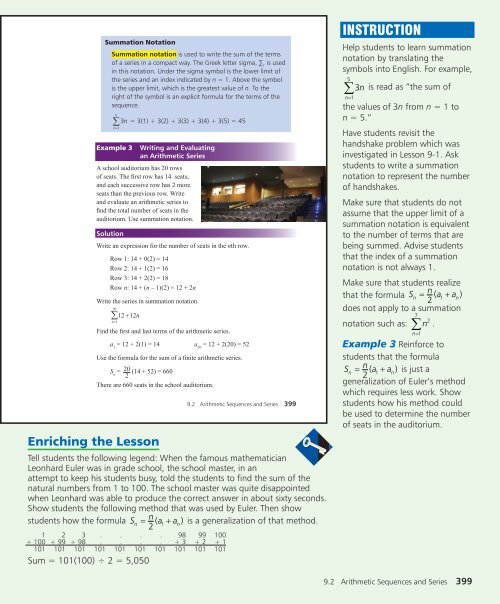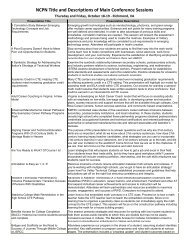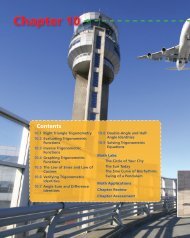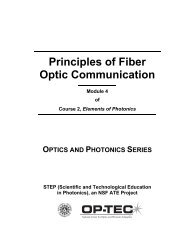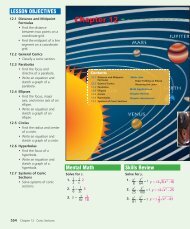hvvrq $ulwkphwlf 6htxhqfhv dqg 6hulhv - NCPN
hvvrq $ulwkphwlf 6htxhqfhv dqg 6hulhv - NCPN
hvvrq $ulwkphwlf 6htxhqfhv dqg 6hulhv - NCPN
Create successful ePaper yourself
Turn your PDF publications into a flip-book with our unique Google optimized e-Paper software.
5<br />
∑<br />
= 1<br />
<br />
3<br />
<br />
<br />
<br />
<br />
<br />
<br />
<br />
<br />
<br />
<br />
<br />
<br />
<br />
<br />
<br />
<br />
<br />
20<br />
∑<br />
=<br />
1<br />
12 + 12<br />
<br />
<br />
<br />
<br />
<br />
<br />
<br />
20 2 <br />
<br />
Enriching the Lesson<br />
<br />
Tell students the following legend: When the famous mathematician<br />
Leonhard Euler was in grade school, the school master, in an<br />
attempt to keep his students busy, told the students to find the sum of the<br />
natural numbers from 1 to 100. The school master was quite disappointed<br />
when Leonhard was able to produce the correct answer in about sixty seconds.<br />
Show students the following method that was used by Euler. Then show<br />
students how the formula S =<br />
n<br />
( a + a ) is a generalization of that method.<br />
n<br />
2 1<br />
1 2 3 . . . . 98 99 100<br />
+ 100 + 99 + 98 . . . . + 3 + 2 + 1<br />
101 101 101 101 101 101 101 101 101 101<br />
Sum = 101(100) ÷ 2 = 5,050<br />
n<br />
INSTRUCTION<br />
Help students to learn summation<br />
notation by translating the<br />
symbols into English. For example,<br />
5<br />
∑<br />
n= 1<br />
3n<br />
is read as “the sum of<br />
the values of 3n from n = 1 to<br />
n = 5.”<br />
Have students revisit the<br />
handshake problem which was<br />
investigated in Lesson 9-1. Ask<br />
students to write a summation<br />
notation to represent the number<br />
of handshakes.<br />
Make sure that students do not<br />
assume that the upper limit of a<br />
summation notation is equivalent<br />
to the number of terms that are<br />
being summed. Advise students<br />
that the index of a summation<br />
notation is not always 1.<br />
Make sure that students realize<br />
that the formula S<br />
n<br />
n<br />
= ( a + a<br />
n)<br />
2 1<br />
does not apply to a summation<br />
7<br />
2<br />
notation such as: ∑ n .<br />
n=<br />
1<br />
Example 3 Reinforce to<br />
students that the formula<br />
S<br />
n<br />
n<br />
= ( a + a<br />
n) is just a<br />
2 1<br />
generalization of Euler’s method<br />
which requires less work. Show<br />
students how his method could<br />
be used to determine the number<br />
of seats in the auditorium.<br />
9.2 Arithmetic Sequences and Series 399


